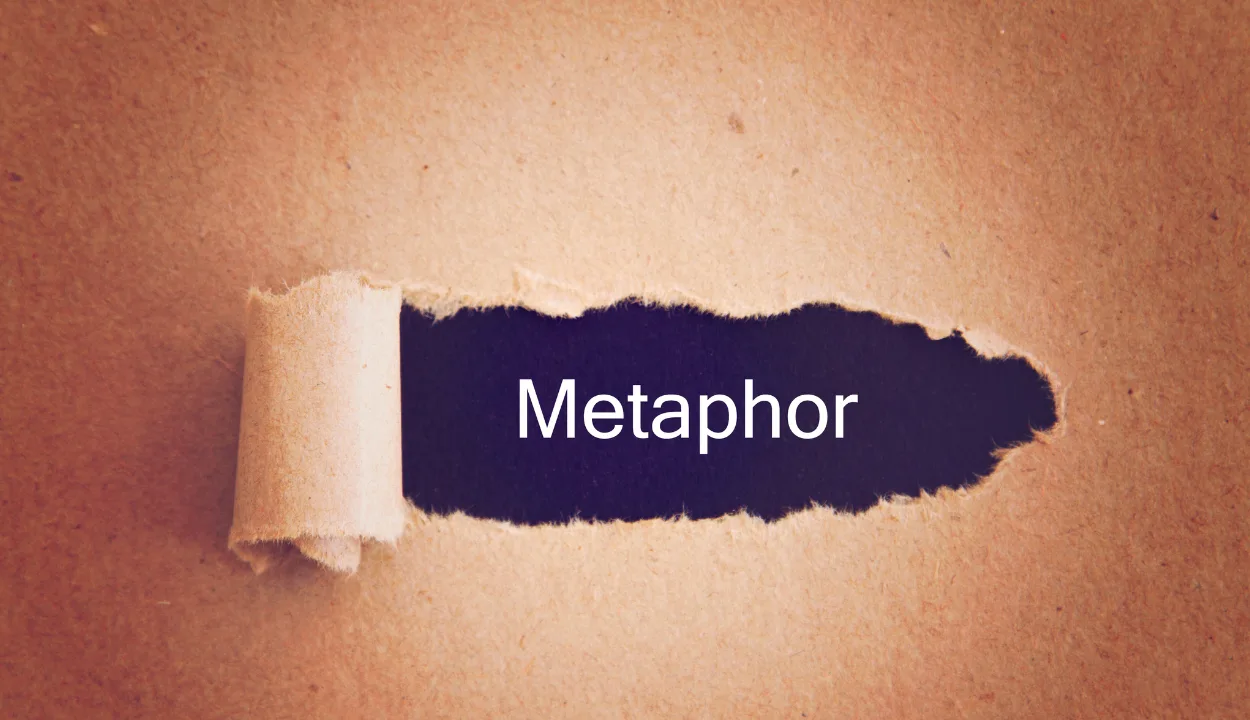Metaphors and idioms are two of the most commonly used figures of speech. They are often used to make a comparison between things to convey a deeper meaning or to make an abstract concept more understandable. But what’s the difference between these two types of figurative language?
A metaphor is a figure of speech that makes an implied comparison between two unrelated things. It is an indirect comparison, so it does not use words such as “like” or “as”. For example, “She was a shining light” is a metaphor that compares someone to a light.
An idiom, on the other hand, is an expression used with its own unique meaning that cannot be derived from its individual components. Idioms are made up of words or phrases and they often have literal meanings in addition to their figurative meanings. For example, “It’s raining cats and dogs” doesn’t actually mean that cats and dogs are falling from the sky – it simply means that it’s raining very heavily.
In this quick guide, we’ll take a look at the differences between metaphors and idioms and provide some examples for each.
What Is A Metaphor?
Metaphors are a figure of speech used to compare two different objects or ideas without using specific words of comparison, such as “like” or “as”. Instead, it uses the characteristics of one object or idea to describe another, giving your reader a vivid picture that connects the two concepts.

For example, when someone says “life is a roller coaster,” they’re not literally implying that life is a theme park ride—they’re saying that life has its ups and downs, twists and turns, joys and sorrows. This type of metaphor provides perspective and insight into understanding the greater meaning of life.
Similarly, metaphors can also be used to describe people, using traits such as “He’s an old lion” or “She’s a dragonfly” to call attention to the most prominent qualities without having to specifically name them. In this way, metaphors can bring both vivid imagery and deeper meaning when describing personalities or characters in stories.
What Is An Idiom?
A phrasal expression with a figurative meaning, usually not easily deduced from its literal definition is known as an idiom. These are words and phrases that have a different connotation from their original meaning. Idioms are often used to express something in a creative or humorous manner.
- For example, saying “I’m going to hit the hay,” is an idiomatic way of saying that you’re going to go to bed.
- Another example of an idiom is “it’s raining money,” which means that you’re having financial success.
Idioms can be regional and cultural as well, so not everyone may understand them fully.

| Metaphor | Idioms | |
| Definition | A figure of speech that describes one thing in terms of another, without using “like” or “as” | A group of words whose meaning cannot be predicted from the meanings of the individual words |
| Examples | “He has a heart of stone.” | “Break a leg” |
| Usage | Used to make comparisons more vivid and engaging | Used to express a certain idea or sentiment |
| Interpretation | The comparison is not meant to be taken literally | The meaning may not be obvious or literal |
| Origin | Derived from Greek word “metaphora” meaning “transfer” | Derived from various sources, including culture, history, and literature |
| Translation | Metaphors do not translate word-for-word | Idioms do not translate word-for-word |
Examples of Metaphors and Idioms
Most of us have used metaphors and idioms in our speech and writing, but do we actually know the difference between the two? A metaphor is a comparison of two unlike things, while an idiom is a phrase that has a meaning different from its literal words.’
Let’s look at some examples of each:
Metaphors
One common example of a metaphor is “the sea was a monster today,” referring to how rough and turbulent the ocean waves were.
Idioms
One popular idiom is “break a leg” – this does not mean someone should literally break their leg but instead means good luck or best wishes for success in an upcoming event.
Key Differences Between Metaphors And Idioms
Metaphors and idioms may seem similar, but there are some key differences that you should be aware of. Here are the main differences between metaphors and idioms:
Metaphors
A metaphor is a figure of speech in which an object or concept is described by comparing it to something else.
For example, someone might say “He is a lion on the battlefield” when referring to a brave soldier. In this case, the soldier’s bravery is compared to the strength and power of a lion.
Idioms
An idiom is an expression or phrase whose literal meaning isn’t taken into consideration rather the figurative meaning holds power. Common examples include “He has a chip on his shoulder”.
Idioms can often be confusing to those who don’t understand their figurative meaning, as they don’t make sense literally.
How to Use a Metaphor and an Idiom Correctly in Writing
When it comes to mastering metaphors and idioms, understanding their differences and proper usage is key. Here are some tips on how to use a metaphor and an idiom properly in writing:
Use Metaphors To Make Abstract Ideas Concrete
Metaphors can help make abstract ideas become concrete and tangible, making them easier to understand. For example, you can describe a difficult decision as “a rock and a hard place”. This phrase makes the situation simpler to comprehend by comparing it to physical objects.
Utilise Idioms For Colorful Writing
Idioms are great for adding color to your writing and making it more interesting for readers. For example, using the phrase “carrying the torch” when referring to someone continuing a legacy helps paint an image of what the person is doing in the reader’s mind.
Context Matters
It’s important to take context into account when using metaphors or idioms. Make sure that they fit into the premises of your piece – if they don’t, then resist the urge to include them!

Common Mistakes When Using Metaphors And Idioms
When using metaphors and idioms, there are a few common mistakes one should be aware of to ensure your writing is clear and effective.
Mixing Metaphors And Idioms
Metaphors and idioms sound similar, but they are not interchangeable. If you mix one for the other, you run the risk of confusing your readers. For example, saying “It’s raining cats and dogs” instead of “It’s raining buckets” will not make sense to your reader or give them an accurate image.
Misinterpreting Idioms
Idiomatic expressions have been around for a long time, so they have come to mean something very specific in their common usage. When using them it is important to understand the proper interpretation. For example, if you believe that “it’s raining cats and dogs” means that it is raining heavily like cats and dogs are falling from the sky, you would be wrong – in this case, it simply means there is heavy rainfall.
Not Knowing Your Audience
Because metaphors and idioms can bring up images or evoke emotions in readers depending on their cultural background, it’s also important to know who your audience is. If there is anything that could potentially be misunderstood or taken out of context due to cultural differences, consider using plain language instead of a metaphor or idiom.
FAQs
What is a metaphor?
A metaphor is a figure of speech that compares one thing to another without using “like” or “as.”
What is an idiom?
An idiom is a group of words whose meaning cannot be predicted from the meanings of the individual words.
What is the difference between a metaphor and an idiom?
A metaphor is a comparison between two things, while an idiom is a group of words whose intended to provide strength and structure to our linguistics.
Conclusion
- To conclude, it is important to understand the distinction between metaphors and idioms.
- A metaphor is a figure of speech in which a word or phrase is applied to an object or action to which it is not literally applicable.
- An idiom is a phrase or expression used to convey a figurative meaning that is not easily understood from its literal wording.
- Both can be used to express ideas in creative and engaging ways, providing a way to spice up everyday language.
- With this understanding of the difference between metaphors and idioms, you will be better equipped to understand and interpret figurative language.

